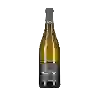
Domaine du Grand SingeOuistiti
This wine generally goes well with
Details and technical informations about Domaine du Grand Singe's Ouistiti.
Discover the grape variety: Panse précoce
Most certainly finding its first origins in southern Provence, registered in the Official Catalogue of table grape varieties list A1. According to genetic analyses published in Montpellier (Hérault), it is the result of a cross between the bicane and the pascal blanc. It should not be confused with the foster' white grown in Italy and wrongly called panse précoce. Finally, it can also be confused with the Panse de Provence, which has downy-pubescent leaves and ripens in the second half of the year.
Last vintages of this wine
The best vintages of Ouistiti from Domaine du Grand Singe are 2018
Informations about the Domaine du Grand Singe
The Domaine du Grand Singe is one of of the world's greatest estates. It offers 4 wines for sale in the of Vaucluse to come and discover on site or to buy online.
The wine region of Vaucluse
The wine region of Vaucluse is located in the region of Méditerranée of Vin de Pays of France. Wineries and vineyards like the Domaine Chêne Bleu or the Domaine Chêne Bleu produce mainly wines red, white and pink. The most planted grape varieties in the region of Vaucluse are Viognier, Merlot and Cabernet-Sauvignon, they are then used in wines in blends or as a single variety. On the nose of Vaucluse often reveals types of flavors of earthy, blueberry or dried herbs and sometimes also flavors of savory, anise or cinnamon.
The wine region of Méditerranée
Méditérranée is a PGI title that covers wines produced in a large area of the South-eastern coast of France, roughly corresponding to the wine region of Provence but also including Part of the Rhône Valley. The PGI shares its territory with multiple AOC appellations as varied as Châteauneuf-du-Pape, Bandol and Côtes de Provence. The PGI Méditérranée catchment area extends over 10 departments (including the two on the island of Corsica), as well as smaller parts of the Isère, Loire and Rhône departments. Viticulture is essential to the culture and economy of this part of France.
The word of the wine: Baco 22A
A white grape variety resulting from the hybridization of the folle blanche and the noah. It is the only hybrid to remain authorized in a French appellation vineyard, that of Armagnac, where it thrives in particular on the tawny sands of Bas-Armagnac. When distilled, its wine produces round, smooth and aromatic eaux-de-vie with hints of ripe fruit.












